Food For Your Face
Nutritional status plays an important role in the maintenance of healthy skin. Macronutrients, carbohydrates, proteins, lipids, micronutrients, vitamins and nutritionally essential minerals work together to maintain the barrier...

Nutritional status plays an important role in the maintenance of healthy skin. Macronutrients, carbohydrates, proteins, lipids, micronutrients, vitamins and nutritionally essential minerals work together to maintain the barrier functions of skin in the face of everyday challenges. Changes in nutritional status that alter skin structure and function can also directly affect skin appearance. Unlike many organs, skin nutrition may be enhanced directly through topical applications. Topical application of micronutrients can complement dietary consumption, leading to a stronger, healthier protective barrier for the body.
This article discusses the roles of select micronutrients and other dietary compounds in the maintenance of skin health. Topical use of these compounds is discussed, and the effects of micronutrient deficiencies in the skin are also covered.
Challenges faced by healthy skin
Although difficult to define, healthy skin has the ability to respond to challenges that would otherwise undermine its structure and function. Balanced nutrition complements the host of endogenous factors that preserve skin health. Moreover, skin that functions properly has aesthetically pleasing properties, giving skin a healthful appearance and feel. Therefore, conditions that adversely affect the biological functions of skin often correspond to a less attractive appearance of skin.
As scientists learn more about diet and the body, it’s increasingly clear that what you eat can significantly affect the health and aging of your skin.
12 of the best foods for keeping your skin healthy.
Fatty Fish
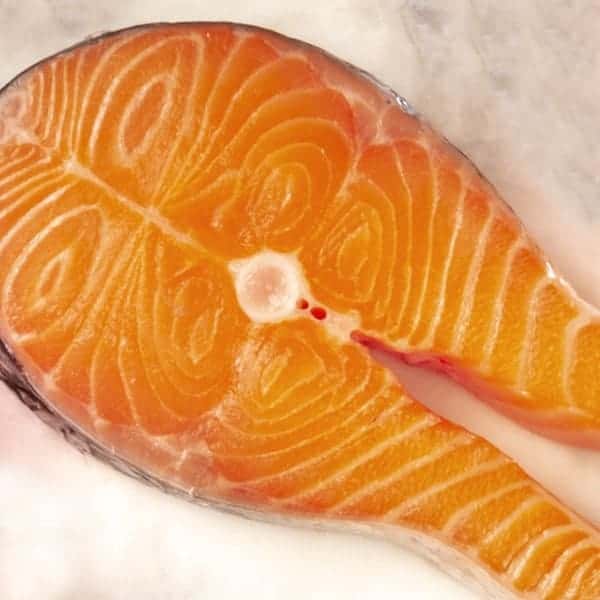
Fatty fish, such as salmon, mackerel, and herring, are excellent foods for healthy skin. They’re rich sources of omega-3 fatty acids, which are important for maintaining skin health. Omega-3 fatty acids are necessary to help keep skin thick, supple, and moisturized. In fact, an omega-3 fatty acid deficiency can cause dry skin. The omega-3 fats in fish reduce inflammation, which can cause redness and acne. They can even make your skin less sensitive to the sun’s harmful rays. Fatty fish is also a source of vitamin E, one of the most important antioxidants for your skin. Getting enough vitamin E is essential for helping protect your skin against damage from free radicals and inflammation. This type of seafood is also a source of high quality protein, which is needed for maintaining the strength and integrity of your skin.
Lastly, fish provides zinc — a mineral vital for regulating inflammation, overall skin health and the production of new skin cells. Zinc deficiency can lead to skin inflammation, lesions, and delayed wound healing.
Avocados
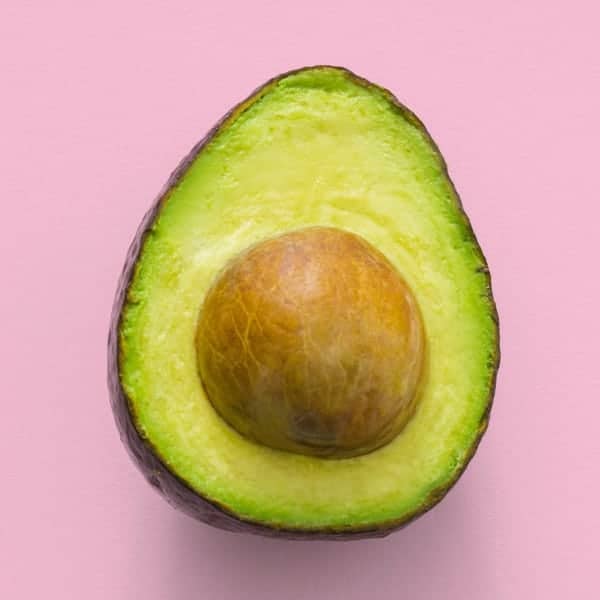
Avocados are high in healthy fats. These fats benefit many functions in your body, including the health of your skin. Getting enough of these fats is essential to help keep skin flexible and moisturized. One study involving over 700 women found that a high intake of total fat — specifically the types of healthy fats found in avocados — was associated with more supple, springy skin. Preliminary evidence also shows that avocados contain compounds that may help protect your skin from sun damage. UV damage to your skin can cause wrinkles and other signs of aging.
Avocados are also a good source of vitamin E, which is an important antioxidant that helps protect your skin from oxidative damage. Most people don’t get enough vitamin E through their diet. Vitamin E seems to be more effective when combined with vitamin C. Vitamin C is also essential for healthy skin. Your skin needs it to create collagen, which is the main structural protein that keeps your skin strong and healthy. Vitamin C deficiency is rare these days, but common symptoms include dry, rough, and scaly skin that tends to bruise easily. Vitamin C is also an antioxidant that helps protect your skin from oxidative damage caused by the sun and the environment, which can lead to signs of aging.
Walnuts
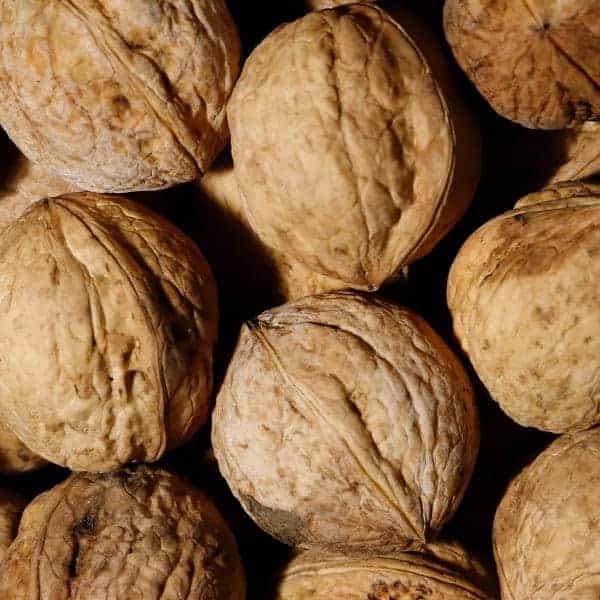
Walnuts have many characteristics that make them an excellent food for healthy skin. They’re a good source of essential fatty acids, which are fats that your body cannot make itself. In fact, they’re richer than most other nuts in both omega-3 and omega-6 fatty acids. A diet too high in omega-6 fats may promote inflammation, including inflammatory conditions of your skin like psoriasis.
On the other hand, omega-3 fats reduce inflammation in your body — including in your skin. While omega-6 fatty acids are plentiful in the Western diet, sources of omega-3 fatty acids are rare. Because walnuts contain a good ratio of these fatty acids, they may help fight the potential inflammatory response to excessive omega-6. What’s more, walnuts contain other nutrients that your skin needs to function properly and stay healthy.
Walnuts, like fish also contains Zinc. Zinc is essential for your skin to function properly as a barrier. It’s also necessary for wound healing and combating both bacteria and inflammation. Walnuts also provide small amounts of the antioxidants vitamin E and selenium, in addition to 4–5 grams of protein per ounce (28 grams).
Sunflower seeds
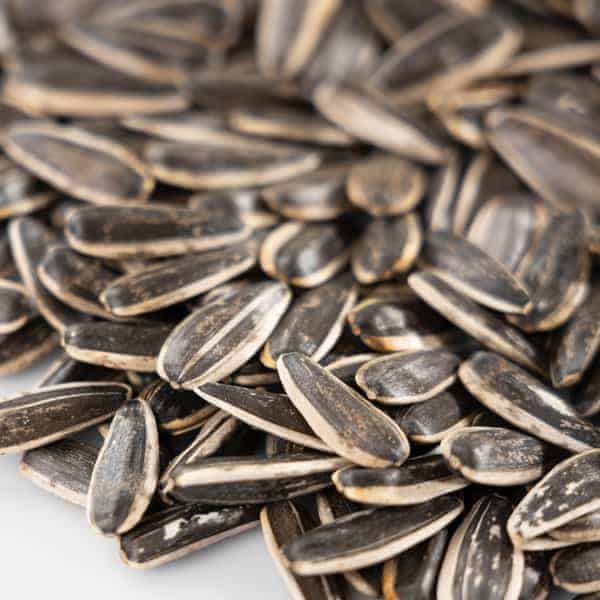
In general, nuts and seeds are good sources of skin-boosting nutrients. Sunflower seeds are an excellent example. One ounce (28 grams) of sunflower seeds packs 49% of the DV for vitamin E, 41% of the DV for selenium, 14% of the DV for zinc, and 5.5 grams of protein.
Sweet Potatoes
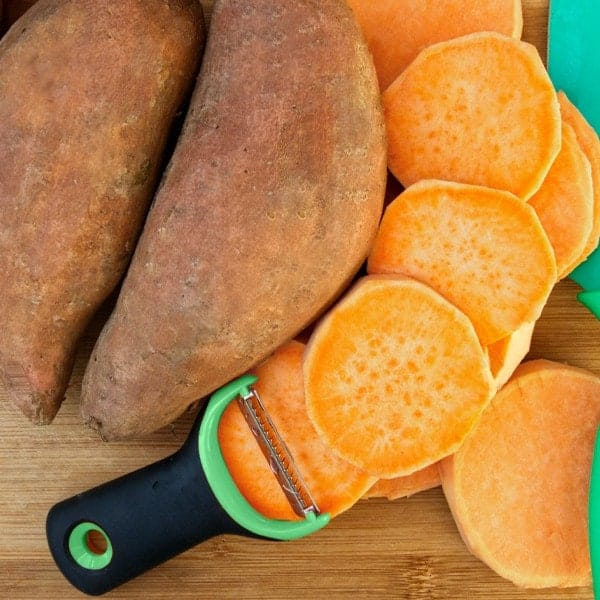
Beta carotene is a nutrient found in plants. It functions as provitamin A, which means it can be converted into vitamin A in your body. Beta carotene is found in oranges and vegetables such as carrots, spinach, and sweet potatoes. Sweet potatoes are an excellent source — one 1/2-cup (100-gram) serving of baked sweet potato contains enough beta carotene to provide more than six times the DV of vitamin A. Carotenoids like beta carotene help keep your skin healthy by acting as a natural sunblock.
When consumed, this antioxidant is incorporated into your skin and helps protect your skin cells from sun exposure. This may help prevent sunburn, cell death, and dry, wrinkled skin.
Red or Yellow Bell Peppers

Like sweet potatoes, bell peppers are an excellent source of beta carotene, which your body converts into vitamin A. One cup (149 grams) of chopped red bell pepper contains the equivalent of 156% of the DV for vitamin A. They’re also one of the best sources of vitamin C. This vitamin is necessary for creating the protein collagen, which keeps skin firm and strong.
A single cup (149 grams) of bell pepper provides an impressive 211% of the DV for vitamin C A large observational study involving women linked eating plenty of vitamin C to a reduced risk of wrinkled and dry skin with age.
Broccoli
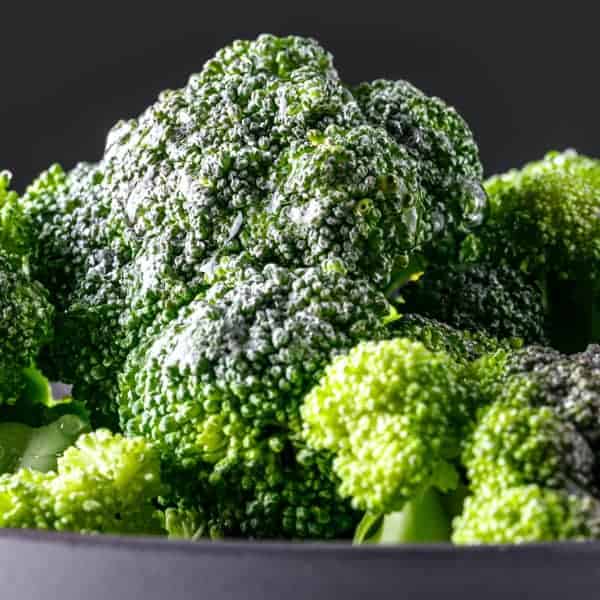
Broccoli is full of many vitamins and minerals important for skin health, including zinc, vitamin A, and vitamin C. It also contains lutein, a carotenoid that works like beta carotene. Lutein helps protect your skin from oxidative damage, which can cause your skin to become dry and wrinkled.
But broccoli florets also pack a special compound called sulforaphane, which boasts some impressive potential benefits. It may even have anti-cancer effects, including on some types of skin cancer. Sulforaphane is likewise a powerful protective agent against sun damage. It works in two ways: neutralizing harmful free radicals and switching on other protective systems in your body. In laboratory tests, sulforaphane reduced the number of skin cells UV light killed by as much as 29%, with protection lasting up to 48 hours. Evidence suggests sulforaphane may also help maintain collagen levels in your skin.
Tomatoes
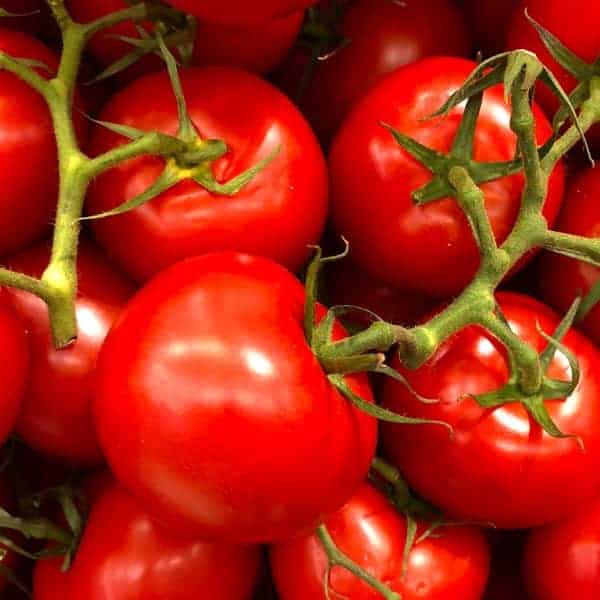
Tomatoes are a great source of vitamin C and contain all of the major carotenoids, including lycopene. Beta carotene, lutein, and lycopene have been shown to protect your skin against damage from the sun. They may also help prevent wrinkling. Because tomatoes are rich in carotenoids, they’re an excellent food for maintaining healthy skin. Consider pairing carotenoid-rich foods like tomatoes with a source of fat, such as cheese or olive oil. Fat increases your absorption of carotenoids.
Soy
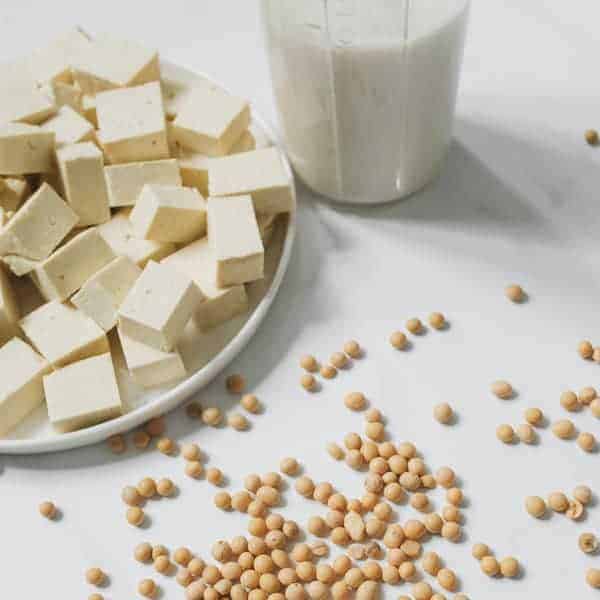
Soy contains isoflavones, a category of plant compounds that can either mimic or block estrogen in your body. Isoflavones may benefit several parts of your body, including your skin.
One small study involving middle-aged women found that eating soy isoflavones every day for 8–12 weeks reduced fine wrinkles and improved skin elasticity. In postmenopausal women, soy may also improve skin dryness and increase collagen, which helps keep your skin smooth and strong. These isoflavones not only help to protect the cells inside your body from damage but also your skin from UV radiation — which may reduce the risk of some skin cancers.
Dark Chocolate

If you need one more reason to eat chocolate, here it is: The effects of cocoa on your skin are pretty phenomenal. After 6–12 weeks of consuming a cocoa powder high in antioxidants each day, participants in one study experienced thicker, more hydrated skin. Their skin was also less rough and scaly, less sensitive to sunburn, and had better blood flow — which brings more nutrients to your skin.
Another study found that eating 20 grams of high-antioxidant dark chocolate per day could allow your skin to withstand over twice as much UV radiation before burning, compared with eating low-antioxidant chocolate. Several other studies have observed similar results, including improvements in the appearance of wrinkles. However, keep in mind that at least one study didn’t find significant effects.
Make sure to choose dark chocolate with at least 70% cocoa to maximize the benefits and keep added sugar to a minimum.
Green Tea
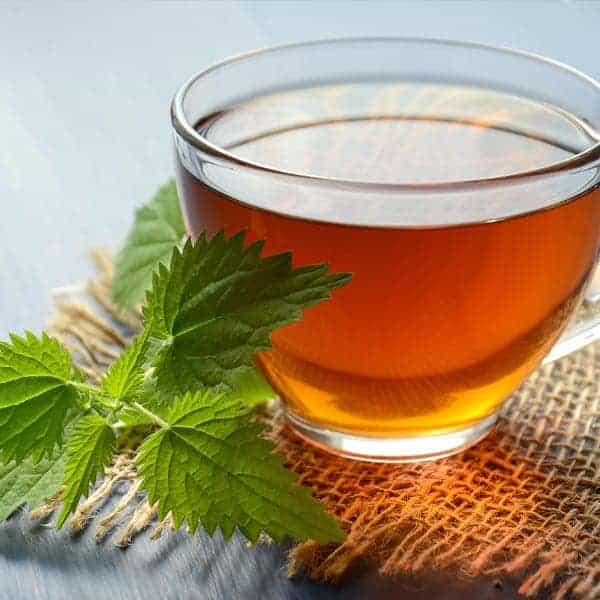
Green tea may help protect your skin from damage and aging. The powerful compounds found in green tea are called catechins and work to improve the health of your skin in several ways. Like several other antioxidant-containing foods, green tea can help protect your skin against sun damage. One 12-week study involving 60 women found that drinking green tea daily could reduce redness from sun exposure by up to 25%. Green tea also improved the moisture, roughness, thickness, and elasticity of their skin. While green tea is a great choice for healthy skin, you may want to avoid drinking your tea with milk, as there’s evidence that milk could reduce the effect of green tea’s antioxidants.
Red Grapes

Red grapes are famous for containing resveratrol, a compound that comes from the skin of red grapes. Resveratrol is credited with a wide range of health benefits, among them is reducing the effects of aging. Test-tube studies suggest it may also help slow the production of harmful free radicals, which damage skin cells and cause signs of aging.
This beneficial compound is also found in red wine. Unfortunately, there’s not much evidence that the amount of resveratrol you get from a glass of red wine is enough to affect your skin. and since red wine is an alcoholic beverage, there are negative effects to drinking it in excess. It’s not recommended to start drinking red wine just because of its potential health benefits. Instead, you should increase your intake of red grapes and berries.
Summary: You are What You Eat

Written By Trish Green DiHom(Pract) B.Ed Cidesco Diplomat. Bach Flower Therapist.
Trish is a graduate of the Victoria University of Manchester, Trish is a teacher with 35 years of experience in the education field. For twenty of those years she has been an educator in the esthetics industry. She is an advocate for raising standards in education for Complementary Health Care Practitioners with special interest in Aromatherapy. Her career in the field of natural health and esthetics is wide and varied. From Doctor of Homeopathy to Cidesco diplomat, Trish is a dedicated professional, committed to ongoing education and the education of others.
